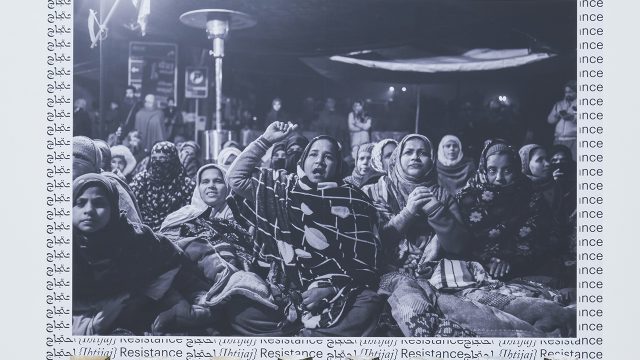22 March 2020 marked the 90th birthday of Stephen Sondheim, arguably one of the most influential musical lyricists and composers of the 20th century.
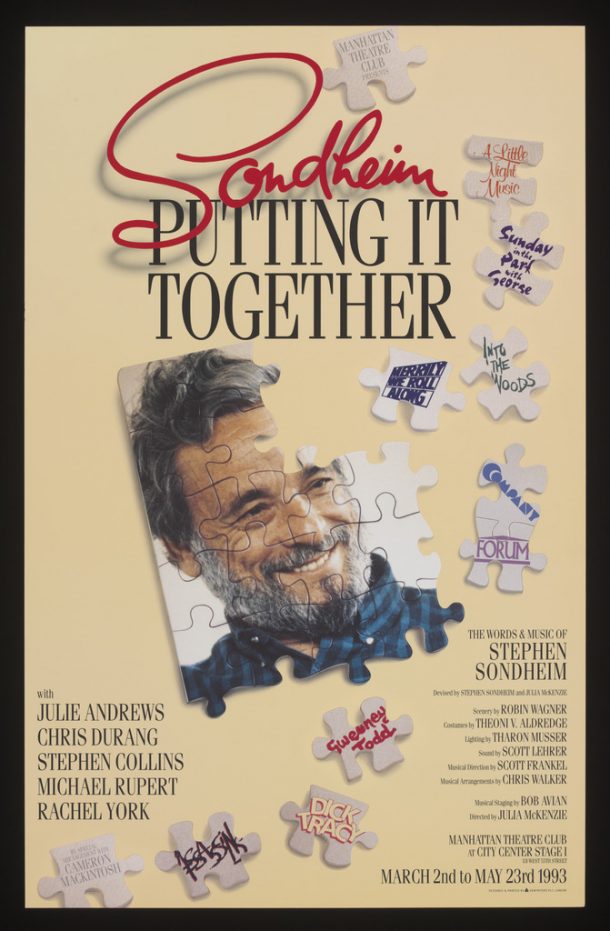
Sondheim is responsible for some of the most iconic musicals of our time, including Sweeney Todd: The Demon Barber of Fleet Street, Into The Woods, Follies, Company, Sunday in the Park with George and Assassins as well as writing the lyrics for both West Side Story and Gypsy.
To celebrate his birthday, here are some Sondheim highlights from the Theatre and Performance Collection for you to enjoy.
Premiering in 1973, A Little Night Music is based on the Ingmar Bergman film Smiles of a Summer Night and follows the romantic entanglements of the actress Desirée Armfeldt in Sweden around 1900. Composed entirely in ¾ (waltz) time, it features one of Sondheim’s best-known songs, ‘Send In The Clowns’.
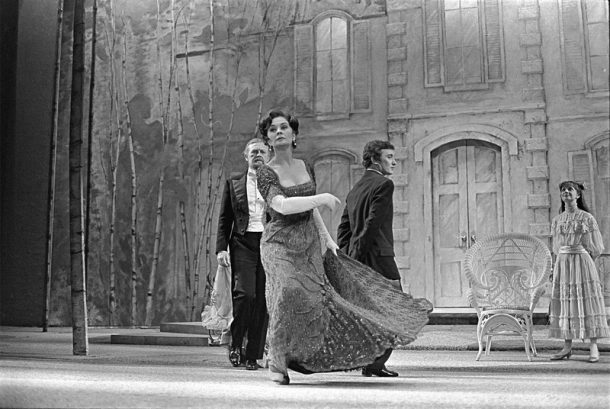
This costume was worn by Jean Simmons as Desirée in the original West End production at the Adelphi Theatre, London. The designer Florence Klotz received a Tony award for her designs, one of three she won for collaborations with Sondheim and producer Hal Prince. The colour scheme for the production was primarily Scandinavian ice blue, but during the climactic dinner party scene, all performers exploded into colour with Desirée’s red dress chosen to reflect her scandalous status within society.
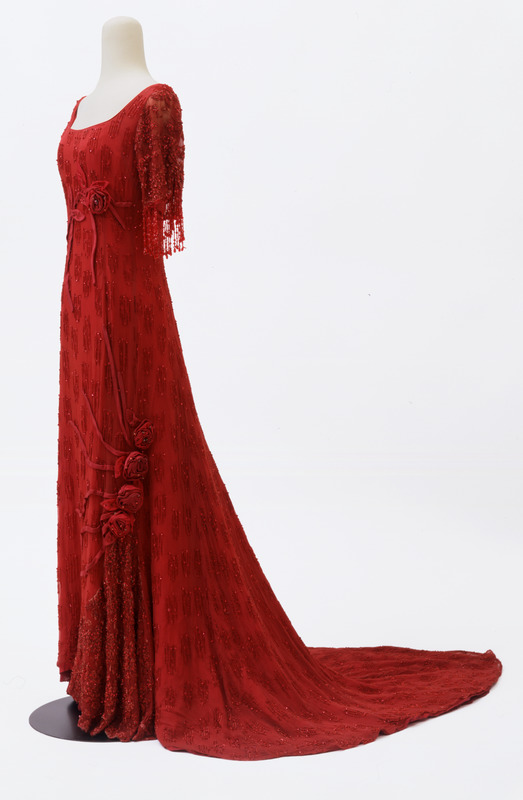
The roots of Sondheim’s musical Sweeney Todd: The Demon Barber of Fleet Street can be found in the penny dreadful story first published in the 1840s, but it was Christopher Bond’s play adaptation at the Theatre Royal Stratford East in 1973 that inspired him to set it to music. Following the tale of a murderous barber avenging the death of his wife and the imprisonment of his daughter, Sweeney Todd is Sondheim’s darkest, bloodiest and most operatic score.
This set model was designed and made by Anthony Ward for the 2011 revival (staged by the Chichester Festival Theatre and later transferred to the Adelphi Theatre, London), starring Michael Ball as Sweeney Todd and Imelda Staunton as Mrs Lovett.
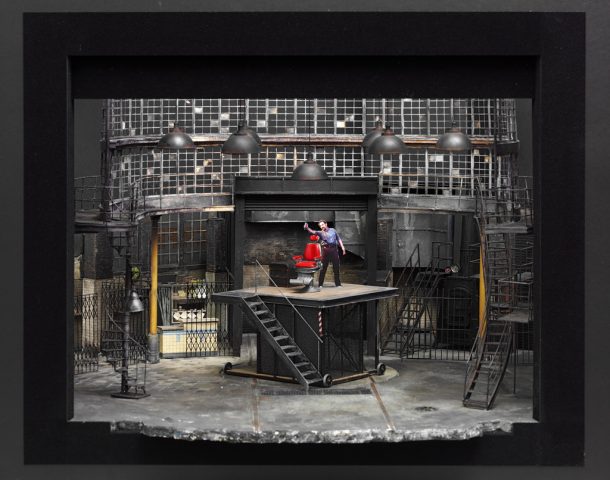
In this production, the setting was moved from the 1840s to the 1930s, another era of significant poverty, unemployment and social inequality. Ward designed a 20th-century factory with two levels to separate the upper–class characters from the lower–class. He also made an aesthetic reference to Sondheim’s score – the hanging lamps against the metal framework appearing like musical notes. ‘The whole point of [Sweeney]’ said Sondheim ‘is that it’s a background score for a horror film … It had to be unsettling, scary, and very romantic.’
Into the Woods debuted at San Diego’s Old Globe Theatre in 1986. A blend of several Brothers Grimm and Samuel Perrault fairy tales, the musical explores familial relationships, good versus evil and the consequences of wish fulfilment.
London’s Royal Opera House staged a revival in 2007, with set and costume design by Lez Brotherston. Brotherston is one of Britain’s most interesting and prolific designers, often working with Matthew Bourne’s dance company New Adventures for which he designed Swan Lake, Edward Scissorhands and Cinderella. The Royal Opera House production mixed opera singers, musical theatre actors as well as film and television actors, including Clive Rowe (The Baker), Anne Reid (Jack’s Mother), Lara Pulver (Lucinda) and Gary Waldhorn (the Narrator). Re-conceived for the ‘black box’ Linbury Studio rather than a large-scale proscenium stage, Brotherston infused the magical setting with a mirrored ceiling and a touch of the gothic.

Inspired by a photograph of Norma Desmond standing in the rubble of the Roxy Cinema, Sondheim composed what is now considered one of the defining musicals of the century: Follies. Set at a reunion of the ‘Weissman’s Follies’ revue, old rivalries, secret regrets and past transgressions are brought to light and characters come face to face with their younger selves. As much about the folly of the American Dream as the folly of youth, Follies features standout musical numbers from Sondheim’s canon such as ‘Broadway Baby’, ‘I’m Still Here’ and ‘Losing My Mind’.
This 2017 revival (staged again in 2018/2019) by the National Theatre won several Olivier Awards, including Best Costume design for Vicki Mortimer. Mortimer drew extensively from historical resources to create spectacular outfits for the young showgirls. This headdress was worn by the young version of Stella Deems and was inspired by designs from the 1920s and 1930s, drawing particular inspiration from Ziegfeld Follies and Folies Bergère.
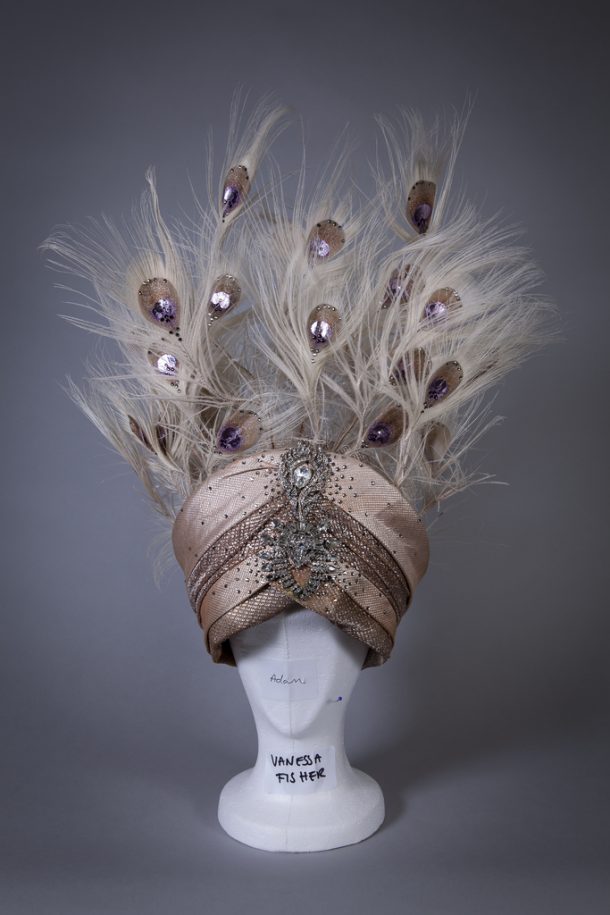
Company, which premiered in 1970, was Sondheim’s first collaboration with producer Hal Prince and the first to earn him a Tony nomination for music and lyrics. The musical was ground-breaking for its subject and structure. The show is formed of a series of vignettes between perpetual bachelor ‘Bobby’ and five couples in his circle who encourage him to settle down.
The 2018/19 revival introduced two gender swaps to the musical with Sondheim’s approval, casting ‘Bobby’ as a woman (now ‘Bobbie’) and changing ‘Amy’ to ‘Jamie’, establishing one couple as gay. Bunny Christie, the designer, is acclaimed for not only designing the physical world but also the psychological. Bobbie’s loose red dress reflects her confidence and freedom but also puts her at odds with her surroundings, which are often claustrophobic and cast in muted colours. Directed by Marianne Elliott and starring Rosalie Craig as ‘Bobbie’ and Patti LuPone as ‘Joanne’, it won four Olivier Awards (including for set design) and transferred to Broadway.

To learn more about the V&A National Collection for the Performing Arts, visit our website.
If you are interested in discovering more musical objects in the collection you can Search the Collections or browse our A-Z of Musical Theatre.

